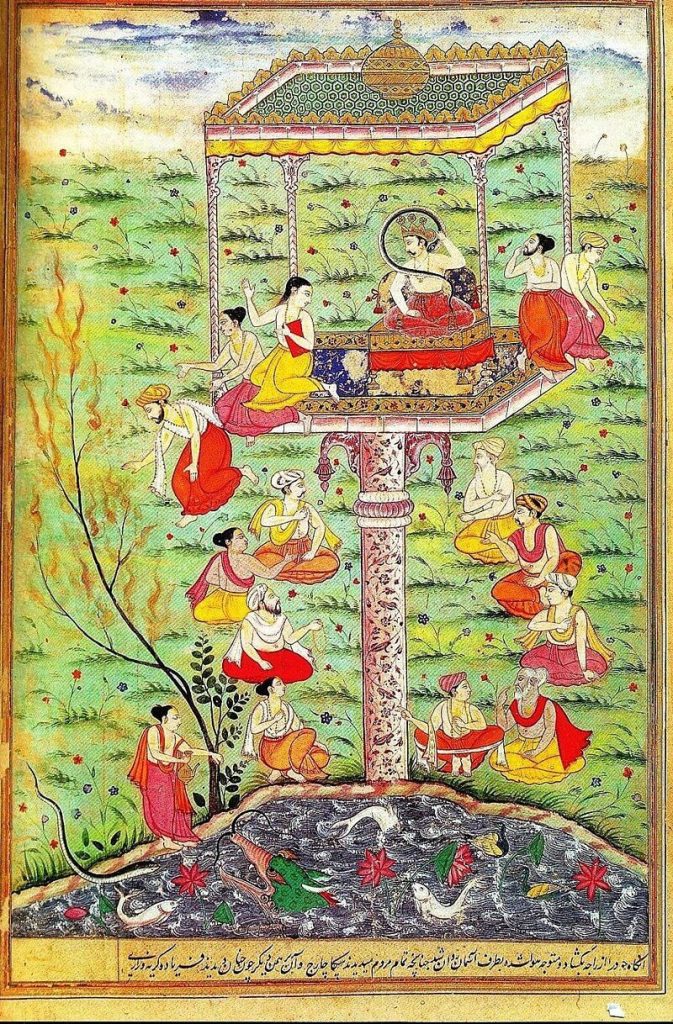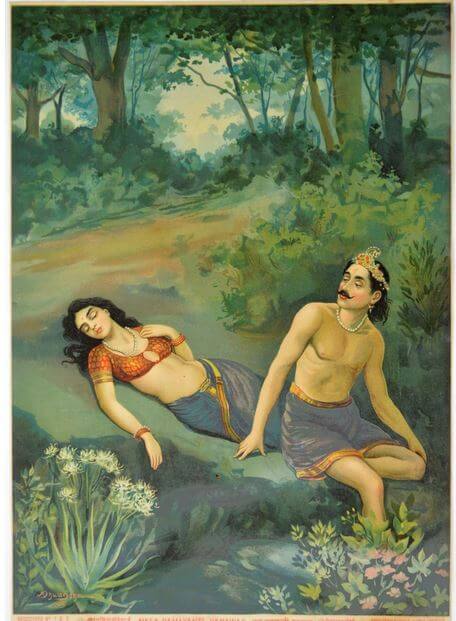Welcome back Mythsters!
Last week Jaz and Anike took us on a wonderful exploration of Indian serpents, mainly concentrating on the naga of Hindu and Buddhist belief. If you haven’t listened to their episode yet, you can check it out here.
Naga mythology is so rich that researching it for a month only allows us to scratch the surface of it. The family lineage of the naga, the different regional stories, and the tales in each holy book are amazing, and you should definitely check them out. Today I’m going to focus in on one aspect of the naga: its bite.
Not Big Biters
Naga aren’t actually famous for biting or poison. Rather than bite their enemies, they call on nature, usually storms, water, or drought, to vanquish their foes. Perhaps this is because they are often represented with the torso of a human, and thinking of a human sinking their fangs into you… well, then we’d be in a vampire season rather than a serpent season. But nagas are shapeshifters that often take full serpent form. As such, there are a few cool tales about their bites.
What’s particularly interesting to me is that a naga bite can be either positive or negative, depending on the circumstances.
Halahala

You might remember the story of Vasuki, who was an evil serpent used by the gods to churn the cosmic milk. The devas held onto his tail while the asuras held his head, and a lot of important stuff, like the moon, floated to the surface. They were trying to get Amrita, the nectar of immortality.
However, all that churning had some unintended consequences. After a thousand years, the poison spitting heads of Vasuki bit the rocks around the ocean, releasing a terrible fire-like poison called halahala from their fangs.
The halahala threatened to kill both the devas and asuras, so they went to Shiva to beg for help. Shiva swallowed the poison, saving the world. But the poison turned his throat blue. (Along with some other things, but this is Vasuki’s story, not Shiva’s).
Sometimes the halahala is also referred to as kalakuta.
So in this we see that the bite of a naga, not even directly inflicted on an individual, can poison the entire world.
Takshaka and King Parikshit

Takshaka is a famous king of the naga and is mentioned in many stories. He is often seen as the naga who gives physicians the means to cure snake bites. But the story that interests me is his desstruction of King Parkshit.
King Parikshit was hunting when he hit a deer who escaped alive. Since this is a bad omen, he sent his royal hunter into the woods to find the deer and finish the job. The hunter came across an old man who had taken a vow of silence. When the hunter asked about the deer, the man did not answer. The hunter grew angry and, seeing a dead snake nearby, picked it up and shot it with his bow over the old man’s shoulder.
When the old man’s son saw this, he begged Takshaka to kill the king. On the appointed day, Takshaka turned himself into a small black worm and his naga servents into old hermits who brought the king offerings of fruit. The king took the piece of fruit that Takshaka hid in.
As the sun set, the king decided he must fulfill the prophecy, so he named the tiny worm Takshaka and held it to his neck to bite him. Takshaka took his true form and surrounded the king in his coils. He then roared, bit him, and spewed flames, engulfing his house in fire.
Takshaka’s story is interesting because it shows his bite being connected with poisonous flames. So rather than dragons simply breathing flames, they are biting flames, which is a really interesting image to consider. It’s also worth noting that Takshaka, for the most part, was a benevolent character, but he quite liked to give revenge for wronged humans.
Bhima and the Poison

Our next story is one of those times when a naga bite is a positive thing. It’s the story of Bhima, the second son of Pandu, who grew up with his four brothers and many cousins. Of all the boys, he was by far the strongest, and he earned the nickname Wolf-belly.
Duryodhana, his eldest cousin, was jealous. So he threw a feast where he poisoned his brother with kalakuta poison. (Not to be confused with halahala, this is poison from a black, bulbous root). The poison put him in a deep sleep and Duryodhana bound Wolf-belly and threw him in the river.
As Wolf-belly was sinking down, he was going to crush a bunch of small naga, so they bit him. Their poison, animal poison instead of plant poison, was stronger than the kalakuta and canceled it out. Wolf-belly woke up, tore his bindings, and smote several of the snakes.
Some thanks for helping out, I guess? Poor baby nagas.
Anyway, Vasuki was impressed by Wolf-belly’s strength, so he allowed him to drink from a special elixir that contained the strength of a thousand nagas.
When Wolf-belly returned home, of course his cousin tried to poison him again. But kalakuta poison no longer had any effect on him.
King Nala and the Naga Karkotaka

In Bhima’s story, the naga bite was kind of lucky-positive. But there are also stories where the naga bite is intentionally positive. This includes the story of King Nala and the Naga Karkotaka.
King Nala had been possessed by an evil spirit. So he abandoned his wife and was wandering the world. He saw a fire burning in the forest. In the middle of the fire was Karkotaka, who had been trapped in that spot by a great sage. The sage had cursed Karkotaka so only Nala could carry him away.
Karkotaka called to Nala and asked him to carry him away from the fire. He then turned himself smaller than the size of a thumb to allow Nala to carry him. Clear from the flames, Karkotaka bit Nala and then turned back into his original shape.
At that point, Nala changed shape into a different man and Karkotaka told him no one would recognize him, so he could be successful in life and battle. He could reunite with his wife. The naga then gave him a robe to put on when he wanted his own shape back.
I’m not sure I would want to be bitten by a naga and forced to change shape against my will, but it really seems like Karkotaka had Nala’s best interests at heart and wanted to reward the man.
There are other minor stories about naga biting men, usually when they are in their small snake form. But these tend to act like ordinary snake bites. Most of the magic and spiritual power of a naga is not in its bite, but in its ability to control the surrounding world. It is, after all, a deity, and they rarely need to get close enough to you to sink their teeth into you.
While I love Indian mythology, we are going to keep moving west. Next week, we’ll dive into Central Asia, and I hope you join us on our journey.
Sources:
Indian Serpent Lore Or The Nagas In Hindu Legend And Art by Vogel, J. Ph.

Koji A. Dae
Koji is a dreamer, a mother, and a writer in that order. The first short story she clearly remembers writing involved fairies losing their wings, and ever since then mythology has found different ways to creep into her storytelling.

Be First to Comment